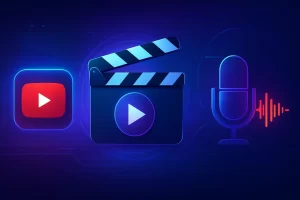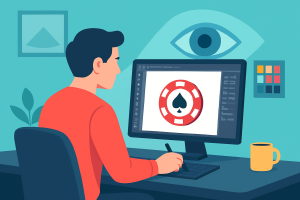The process of creating a logo used to be a huge deal before. Designers spent hours trying new
color schemes. They changed shapes in their program and sketched different ideas. Finding the
correct path required a great deal of trial and error. AI is now a useful tool, but it has not taken the
role of that creative work. Designers still contribute their own ideas and styles, but AI sure does
make it easier and faster for them to do so.
One of the biggest changes this magic intelligence brings is how fast it can generate ideas.
What used to take a designer hours of sketching can now appear on the screen in just a few
seconds. With a simple description, it can create a full board of possible concepts.
It suggests fonts, colors, layouts, shapes, and symbols you might not have thought of on your own.
Designers can then pick the ideas that stand out and shape them into something unique. It
saves a huge amount of time, but it also opens up room for creative directions that might not
have been considered before.
During the creative process, artificial intelligence also aids designers in making better choices.
Many platforms look at shape psychology, color trends, and industry norms. They offer
recommendations that help brands meet their goals. For example, the AI can suggest colors or
shapes often linked to professionalism and safety.
The way computer intelligence enhances teamwork is another significant change. One of the
slowest stages of the design process is frequently getting client feedback. AI tools help clients
compare options. They let designers quickly create different versions of a concept. Teams can
examine several versions at once rather of having to wait days for modifications. This makes it
easier for clients to express their needs, and it gives designers the confidence to proceed.
Advanced tech contributes to technological advancements as well. Logos need to function
across a variety of platforms, including billboards, smartphones, and small app icons. AI can
automatically resize and change designs for any setting. It can ensure that the overall clarity,
color contrast, and readability are all good on a variety of screen types. This saves hours of
manual testing. It also ensures the logo looks crisp and balanced everywhere.
AI-powered animated logos are another emerging trend. Today's brands, particularly on digital
platforms, desire movement and connection. AI facilitates the creation of fluid animations from
static designs. This makes it possible for dynamic branding to adapt to user behavior or
platform-specific changes.
While some fear that AI will eventually replace designers, the truth is quite different. AI is
capable of making choices, but it lacks human comprehension of emotion, narrative, and
cultural complexity. AI is a tool, not a replacement, for designers. Technology helps them work
better, think bigger, and create polished results. Still, the creative vision comes from individuals.
AI's impact on logo design will only increase as it develops.
The process is already becoming quicker, more adaptable, and more creative. Clients enjoy quicker results and better ideas,
while designers have more choices available. While the basics of logo design remain the same,
the technology behind it has changed a lot.
Whether they’re searching for fresh ideas, exploring modern design tools, or simply browsing different websites — including platforms such as https://www.cookiecasino.com/en-CA — people are constantly exposed to how rapidly creative technology is evolving. In fact, artificial intelligence has transformed logo design more in the past few years than in previous decades. It has reshaped the way designers brainstorm ideas, refine concepts, and present their final logos. The entire process has become faster, more experimental, and far more accessible than ever before.




